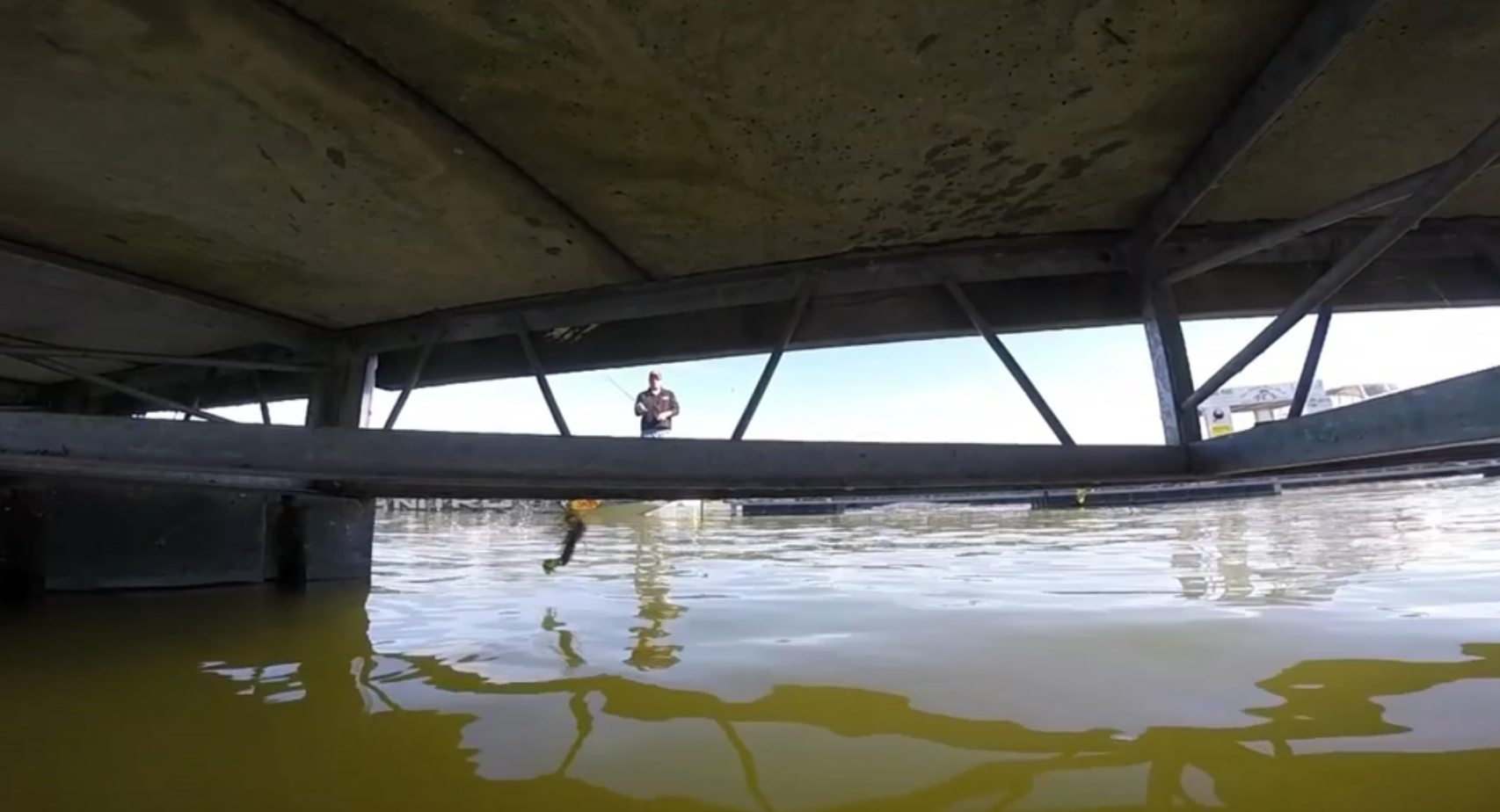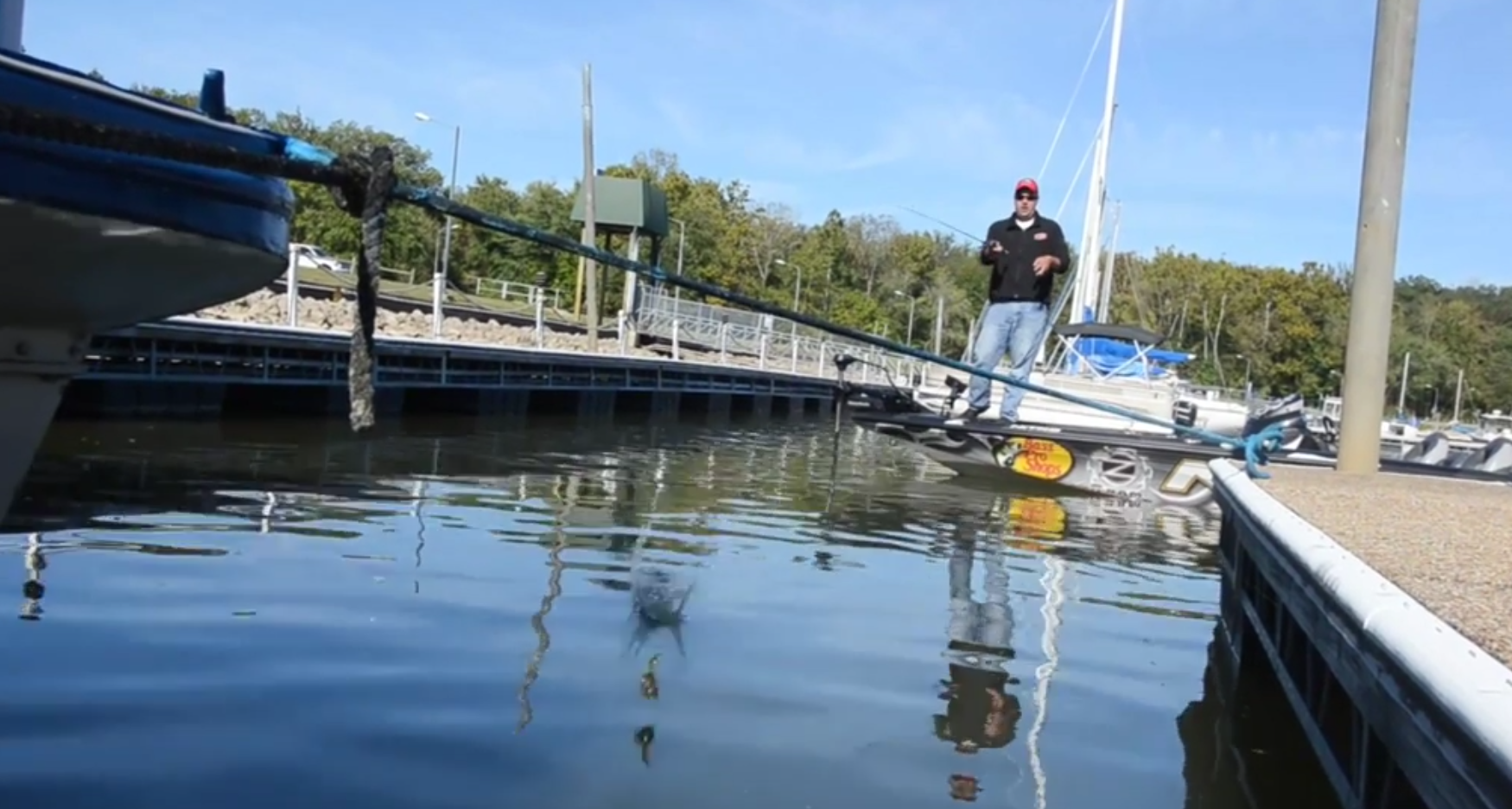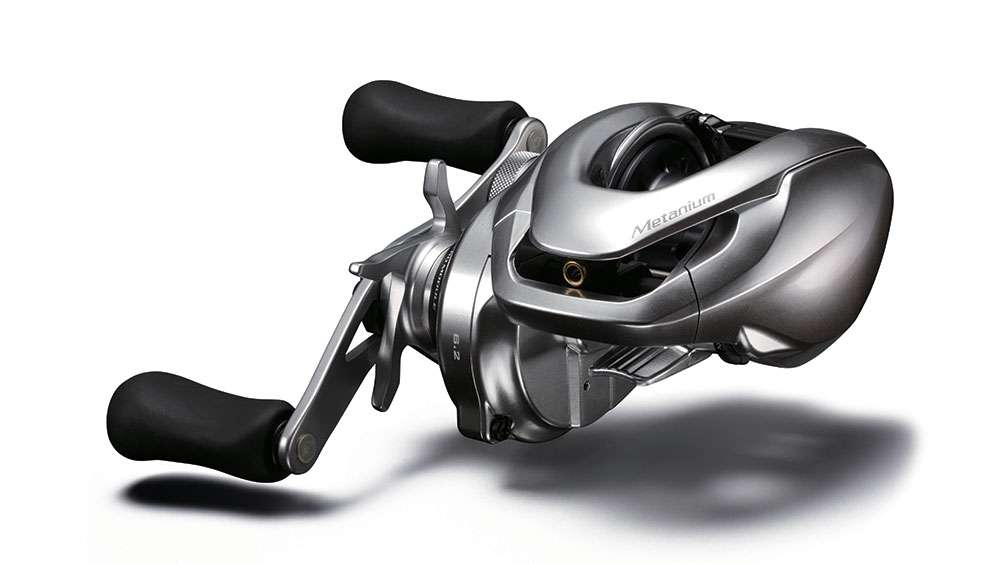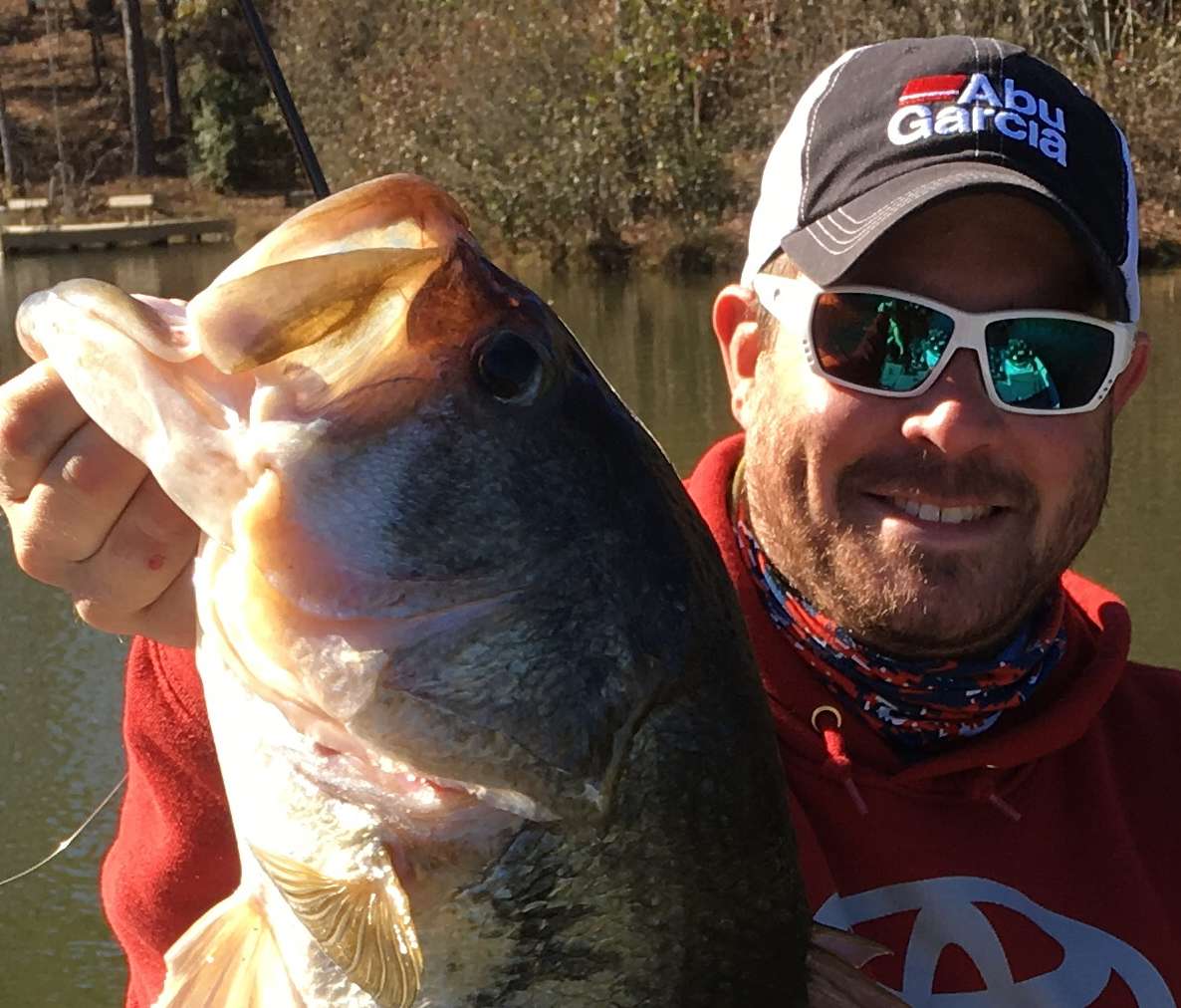
One of the most intriguing aspects about bass fishing is the vast array of techniques that can be employed to catch one. Perhaps that is one of the most attractive things about the sport in general, but figure how many ways there are to catch bass, then think about how many you actually use.
Why learn a new technique? Well, if you ever get into a situation where you need to catch a fish, whether it’s for fun or a tournament check, having an extra trick up your sleeve could be critical. Of all the effective methods out there, which one is the hardest to master? I’d be willing to bet that most anglers would agree that skipping a jig under docks or overhanging limbs might be the toughest.
It starts with the right rod, reel, line and jig combination, but getting some instruction from an accomplished dock skipper will put you on the path to catching good numbers of fish from those hard-to-reach areas.
There are a great number of anglers on the Bassmaster Elite Series tour who could provide insight on how to get good at skipping, but several I spoke with said Michigan native Mark Zona is about as good as they come.
It’s also worth noting Zona is not only a very accomplished co-host for Bassmaster TV and Bassmaster LIVE, he’s one of the few media guys who could pick up a fishing rod and have a career as an Elite Series pro. He’s an outstanding angler, no question about it.
“I grew up fishing the dock-studded lakes of Michigan — there are literally docks everywhere, which naturally hold a good numbers of bass,” the host of Zona’s Awesome Fishing Show said. “As I was a young tournament angler, I figured if I could effectively place a jig under as many docks as possible during an eight-hour tournament day, I would find a solid limit of bass. That’s when I learned how to skip a jig.”

He admits that learning the technique on a spinning outfit is likely the best way to reduce frustration, and really understanding how the lure reacts to the water’s surface before upgrading to a baitcaster. But once an angler figures out how to skip with baitcasting equipment, he’ll be able to call his shots and hit spots that are seemingly impossible to reach.
“I learned how to skip docks while wading, and that’s the exact same way I’ve taught my twin boys the technique, and they’ve become deadly accurate,” he continued. “The real beauty to skipping is it will work on any lake in the country. Docks provide the kind of structure that offers shelter for baitfish and predators alike — if docks are available, there are fish to be caught. Think about it this way: We’ve all heard that the longer you keep your bait in the strike zone, the better your chances are at catching fish. Well, a dock is a giant strike zone, skipping is the only way to get your presentation into the dark, unmolested corners of that man-made structure.”
The Presentation
The right rod, reel, line and jig combination is essential to learning and performing the skipping technique with as little frustration as possible. Zona prefers a 3/8- to 1/2-ounce Strike King Structure Jig trailered with a Rage Craw over any other combination.
“I really think that jig and trailer is one of the best skipping options out there,” he said. “The way the back of the head tapers to the nose and how the hook positions the trailer makes it easy to skip. A lot of anglers seem to think that a smaller, more finesse-type jig is important, but a 1/2-ouncer skips better and is much easier to control. Plus, a bass will eat a jig that size just as quickly — if not quicker — than a smaller jig.”
He also says that a No. 1 Trokar whacky-worm hook with 4- to 5-inch whacky-rigged stick bait is another solid skipping presentation. It skips easily, falls slowly and naturally comes with a very appealing retrieve. Bass will eat it.
The Gear
Zona suggested learning to skip with a spinning combo. Here’s his rig of choice: the new 7-foot, 1-inch medium weight, extra-fast G. Loomis Jig & Worm rod (GLX 853S). The best reel to pair it up with is the new Shimano Stradic CI4+ in a C3000 size; the bigger spool holds a lot of line.
“I load the Stradic with 10-pound PowerPro Super 8 Slick because it comes off the reel extremely fast, which is key to getting long, accurate skips made,” Zona said. “In a clear-water situation, I might add a 5-foot, 12-pound fluorocarbon leader. Like I said, learning how to skip with spinning gear will make the transition to baitcasting tackle much easier.”
He says the amount of practice that is required for skipping with a baitcaster can be intimidating, but it starts with the right rod-and-reel combination. Zona likes a 7-foot, 1-inch G. Loomis NRX Jig & Worm, with heavy power and fast action (NRX 854C). He’ll pair that rod with a newShimano Metanium 100 XG, which is ultra fast in a 8.5:1 gear ratio, and load it with 20-pound fluorocarbon.
Zona explained that a fast rod tip helps with casting accuracy and consistency, but also helps the angler with a quick hook set.
“The bass will often eat the jig as soon as it hits the water,” he said. “You need to react fast, and you need a rod that reacts with you. The NRX and IMX blanks literally become an extension of your arm allowing for a fast and solid hook set.”
It’s easy for a bass to become wrapped up and impossible to move beneath a dock’s cluttered underbelly, and a rod with a stiff backbone adds pulling power to the equation, which will bring more fish to the boat.

The Dock
“Not all docks are created equal,” he said. “That’s the part of the puzzle I can’t help you with, you just have to go out and fish them all to determine which ones will hold the most and biggest fish. I can help you with this much, though. I really believe that the shallowest docks hold the biggest fish. There may not be as many fish as there might be on a deeper dock, but over the years I’ve found that large, rogue bass like shallow docks more than any other.” Zona likes a dock that sits in water that is almost too shallow for his boat. Just 1 to 2 feet of water is enough to hide a big bass that doesn’t like company. He also said that if you notice a lot of bluegills and other panfish “happily” hanging around, that’s typically not a good thing. Docks that seem devoid of life often hold big hungry bass.
“The bottom line is, you’re just going to have to go try the different docks for yourself, but that’s part of the fun!”
The Approach
How an angler approaches a dock is key to getting those fish to bite. If you come in hot, you stand a good chance of blowing the dock-staging bass out of their comfort zone before you can even make a presentation. Slow down, he said, and approach it just like you would a small laydown along the shore.
“Getting too close to a dock makes it hard to accurately skip,” he said. “You want your bait’s first skip to occur about 3 to 5 feet in front of the edge of the dock. The further out you are the flatter your angle will be, which helps in making the lure skip across the surface. Get too close and you’ll never get the jig to bounce. Position the boat about three-quarters to a full boat length from the docks edge before making a cast, and work your way around hitting all the good angles.”
When it comes to approaching a dock, it largely depends on which hand you use. Zona said that if you’re right handed, fish the dock clockwise, or if you’re left handed fish it counter clockwise. Keeping this in mind will put you in position to make more casts without blowing out the dock.
“One of the biggest mistakes I see anglers make, is they wind up and swing their arm like a Major League pitcher,” he explained. “Effective and accurate skipping happens from the elbow to the wrist. It’s literally just like skipping a rock, you really only use your lower arm, and the same technique applies when there is a rod in your hand.”
Zona suggests starting with the spinning outfit and a weightless presentation, and then graduating to baitcasting tackle and heavier jigs. He said most people won’t be able to pick up a baitcaster and just go to work; it’ll take practice and time on the water. However, learning this technique and adding it to your arsenal will pay off big time. Especially in the summer months when bass seek the shade and cover docks provide.
“It’s a very effective method, and it’s an absolute blast hooking into a giant bass at the back of a dock,” he said. “You’ll be glad you picked up the technique!”

